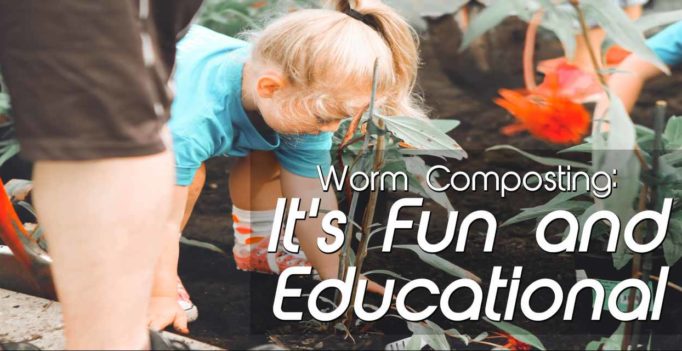Do you remember it? That first spark of delight from the gentle, wet wiggle across your hand?
Such a moment can leave you enchanted for life. Do you imagine yourself, full of wonder and awe, or afraid but desperately curious?
Today, in 2020, TVs, phones, and tablets vie for our attention. They do a good job of keeping us inside, out of the dirt. Some of the year, the cold and darkness do too. We hardly recognize low-level depression set in, but without time in nature, we lose a certain connection.
Thankfully, we’re still curious about the living world and long to be a healthy part of it.
That’s why young, old, and in-between, people who choose to raise red wigglers are very fortunate. Worm composting injects a natural component into any lifestyle. It adds an element of fun and discovery to every day!
Come see how this “dirty” pastime offers an experience that will delight and grow your mind. Both entertaining and educational, raising compost worms is a natural way to beautify your life inside and out.
An Underground Movement That’s Shaking Things Up
Educators and parents from coast to coast will tell you that it doesn’t take a classroom to get a person to learn. Desks and textbooks are wonderful, but hands-on learning is where it’s at.
Schools incorporating technology and worm composting open up vast opportunities for classroom discovery and application. But when it comes to learning about the world of Eisenia fetida, from school or home, getting down in the dirt is the way to do it.
And we’re not alone in our thinking! School districts across the nation are incorporating worm composting to their curriculums and reaping the rewards big time!
District-wide participation in projects like these builds impressive micro-movements with measurable environmental impact. Here and there, something new and vital is being added to the narrative.
Will you be the first to bring up worm composting at your school’s next PTO meeting?
Why Bring Worm Composting into Schools?
Tiny, quiet critters have long been part of the life-science curriculum, bacteria, mealworms, earthworms. But, lo and behold, the benefits of using red wiggler composting worms far outweigh what you may recall of grade-school mason-jar mealworms.
These wriggly creatures (and their fertilizer) are worth more than their weight in rolled oats! Today, worm composting discovery and learning is easily integrated into the entire STEM(Science, Technology, Engineering, and Math)-based curriculum.
What’s more, an ongoing worm composting project dramatically reduces waste output and creates a renewable fundraising/donating product. Learning through composting with red wigglers is a smart way to create waves of positive change.
It all starts with a simple classroom project using a worm bin and a pound of worms.
Nature is the Best Teacher
Once set up, a worm bin is the perfect observatory for some of nature’s finest accomplishments. Students (and educators) of any age marvel at red wigglers’ unique qualities without disturbing their work.
Composting with worms provides a context for teaching these and other relevant topics:
- The natural life cycle
- Anatomy and physiology
- Cocoons, eggs, reproduction
- Natural adaptation
- Gestation
- Stages of life
- The importance of death and
decomposition
- Fertilizer
- Population density
- Soil
- Nutrients
- And roots
- Types of
- Qualities of
- Recycling
- Vs. upcycling
- Benefits of
- Opportunities for
- Resource management
- Distribution
- Cost of mismanagement
- Garbage and landfills
- State of affairs
- Personal contribution
- Composting
- What is available
- How to do it
- Where to use it
- Diet
- Health and diet
- In relation to plants and life cycle
- Biodegradable and
non-biodegradable items
- pollution
- Stewardship
- Future generations
- Responsibility
- Teach others
- Money management
- Animal care
- Economics
- Donation or fundraiser
- business
Don’t Forget the Fun!
Curious and carefree learners everywhere enjoy the pure joy of playing with worms in the dirt. These quiet and predictable creatures make people slow down, giggle, and engage in a way that paper or screens don’t.
No matter your age, precious moments shared in observation and discussion are deeply meaningful and entertaining. Old and young farmers, teachers, parents, and children alike come together over the delightful squirm of a worm.
Fun, Educational, and Free?
For productive pets and wonderful workers, raising red wigglers is a fun and educational opportunity that pays off for a lifetime. While the initial cost of worms is not to be devalued, payback and return-on-investment far outweigh that output.
Hungry worms eat up to half their body weight each day. That sounds like it would cost a lot of $. But when it’s your trash they eat, that $ stays in your pocket instead. Not convinced? Check this out, What Can Red Wigglers Eat?


Be the first to comment